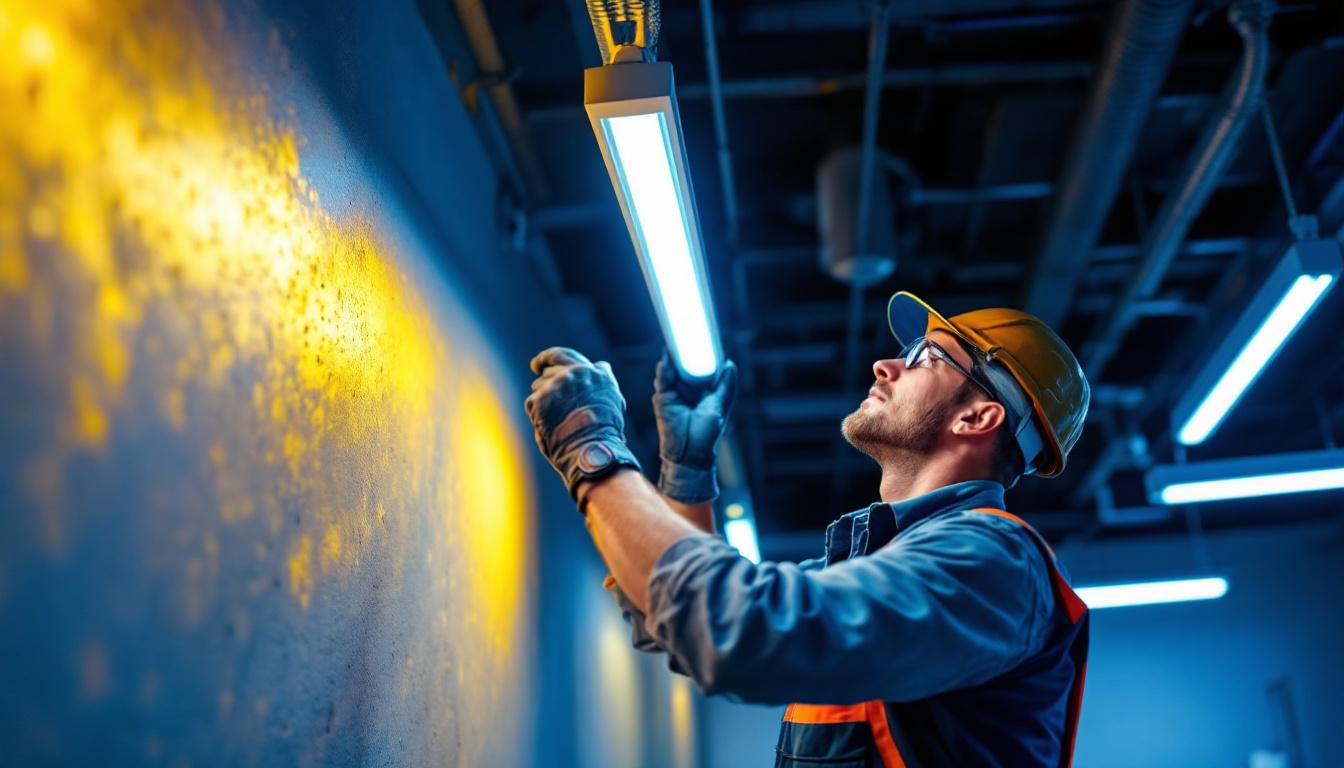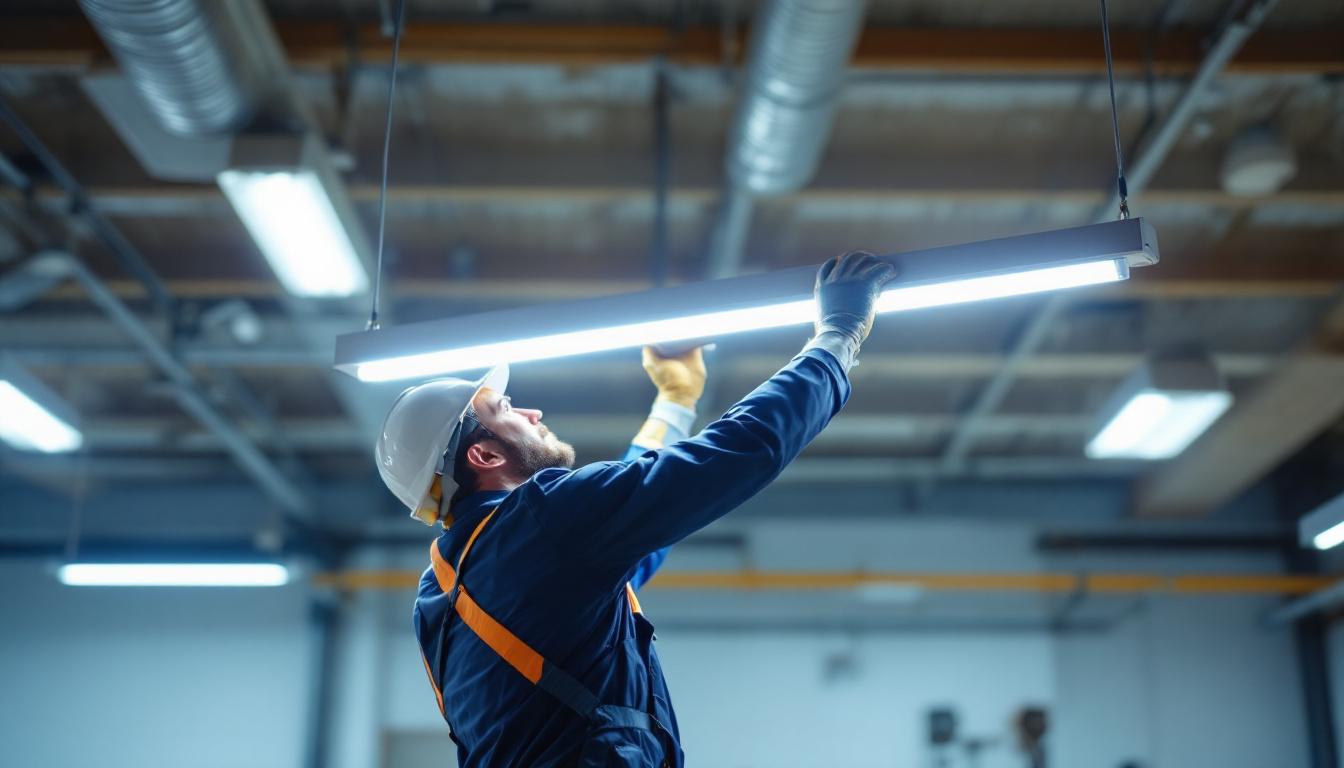
As the demand for sustainable and energy-efficient solutions continues to rise, solar-powered outdoor lighting has emerged as a popular choice for both residential and commercial projects. For lighting contractors, understanding the intricacies of solar lighting systems is crucial to ensure successful installations and satisfied clients. However, there are common pitfalls that can lead to unsatisfactory results. This guide aims to highlight these mistakes and provide insights for lighting contractors to enhance their projects.
Before diving into the common mistakes, it is essential to have a solid understanding of the components that make up solar-powered lighting systems. These systems typically consist of solar panels, batteries, LED lights, and controllers. Each component plays a vital role in the overall performance and efficiency of the lighting solution.
Solar panels are responsible for converting sunlight into electricity. The size and quality of the panels directly impact the amount of energy generated. Contractors should consider the location of the panels, ensuring they are positioned to receive maximum sunlight exposure throughout the day. Additionally, the angle of the panels can also affect performance; panels that are tilted at the optimal angle for the geographical location can capture more sunlight, thereby increasing energy output. Regular maintenance, such as cleaning the panels to remove dust and debris, is also crucial to maintaining their efficiency over time.
Batteries store the energy collected by the solar panels, allowing the lights to function even when the sun isn’t shining. It is crucial to select batteries with adequate capacity to meet the energy demands of the lighting system. Additionally, the lifespan and efficiency of the batteries should be taken into account to avoid frequent replacements. Choosing the right type of battery, whether lithium-ion or lead-acid, can also influence the overall cost and efficiency of the system. Lithium-ion batteries, for example, tend to have a longer lifespan and higher energy density, making them a popular choice for modern solar lighting solutions.
LED lights are favored for their energy efficiency and longevity. However, not all LEDs are created equal. Contractors should choose high-quality LED fixtures that provide the desired brightness and color temperature while consuming minimal energy. This choice can significantly affect the overall performance of the solar lighting system. Furthermore, the placement of LED fixtures is equally important; strategic positioning can enhance illumination and reduce energy waste. For instance, using motion sensors in conjunction with LED lights can optimize energy consumption by ensuring lights are only activated when needed, thus extending the life of both the batteries and the LEDs.
With a clear understanding of the components, it is important to be aware of the common mistakes that can compromise the effectiveness of solar-powered outdoor lighting installations.
One of the most critical steps in any outdoor lighting project is conducting a thorough site assessment. Failing to evaluate the site can lead to inadequate solar panel placement, resulting in insufficient energy generation. Factors such as shading from trees or buildings, the orientation of the panels, and the overall geography of the area must be considered.
Contractors should take the time to analyze the site during different times of the day to understand how sunlight interacts with the area. This assessment will guide the placement of solar panels and ensure optimal performance. Additionally, it is beneficial to consider seasonal changes in sunlight exposure, as the angle of the sun shifts throughout the year. A well-planned site assessment not only maximizes energy efficiency but also enhances the aesthetic appeal of the installation, creating a harmonious blend with the surrounding environment.
Choosing the wrong battery can lead to insufficient power supply for the lighting system. Contractors often underestimate the energy requirements of the lights or fail to account for the duration of use. It is essential to calculate the total wattage needed and select batteries that can handle the load while providing a buffer for cloudy days or extended periods without sunlight.
Additionally, consider the battery’s discharge rate and lifespan. Opting for high-quality batteries may involve a higher upfront cost but can save money in the long run through reduced maintenance and replacement needs. Furthermore, it is advisable to explore different battery technologies, such as lithium-ion versus lead-acid, as each type offers distinct advantages in terms of efficiency, weight, and longevity. Understanding these differences can empower contractors to make informed decisions that align with the specific needs of the project.
Local regulations and codes can significantly impact the installation of solar-powered lighting systems. Some areas may have specific guidelines regarding the placement of solar panels, light pollution, or energy efficiency standards. Failing to comply with these regulations can lead to fines or the need for costly modifications.
Contractors should familiarize themselves with local laws and obtain any necessary permits before commencing work. This proactive approach can prevent delays and ensure a smoother installation process. Additionally, engaging with local authorities or community organizations can provide insights into best practices and emerging trends in solar technology. By staying informed about local initiatives and incentives, contractors can not only enhance their project’s compliance but also potentially benefit from financial assistance or grants aimed at promoting sustainable energy solutions.
Designing an effective solar lighting system goes beyond simply installing lights and panels. Thoughtful design can enhance aesthetics while maximizing functionality.
When designing outdoor lighting, it is essential to maintain a cohesive look that complements the surrounding environment. This can involve selecting fixtures that match the architectural style of the property or the landscape. A well-designed lighting system not only serves its functional purpose but also enhances the overall appeal of the space.
Additionally, consider the placement of lights to create a balanced illumination effect. Avoid clustering lights too closely together, which can create harsh shadows and uneven lighting. Instead, space them out strategically to ensure even coverage.
As technology advances, incorporating smart features into solar lighting systems can provide added convenience and efficiency. Features such as motion sensors, timers, and remote controls can enhance the functionality of the lights while conserving energy.
Contractors should explore options for integrating smart technology into their solar lighting designs. This not only adds value to the project but also appeals to clients looking for modern, innovative solutions.
Proper maintenance is key to ensuring the longevity of solar-powered lighting systems. While these systems generally require less maintenance than traditional lighting, there are still important steps to keep them functioning optimally.
Solar panels can accumulate dirt, dust, and debris over time, which can hinder their ability to absorb sunlight. Regular cleaning is essential to maintain their efficiency. Contractors should advise clients on the best practices for cleaning solar panels, including the use of soft brushes and non-abrasive cleaners.
Additionally, it is important to check for any obstructions, such as overhanging branches, that could block sunlight from reaching the panels. Regular maintenance checks can help identify and address these issues before they impact performance.
Monitoring the health of the batteries is crucial for the overall performance of the solar lighting system. Contractors should educate clients on how to recognize signs of battery failure, such as dimming lights or inconsistent performance. Establishing a routine for battery checks can help catch issues early and prolong the lifespan of the system.
When it comes time for battery replacement, contractors should ensure that clients are aware of the proper disposal methods for old batteries, as they can be hazardous to the environment.
Effective communication with clients is essential throughout the installation process. Educating clients about the benefits and limitations of solar-powered lighting can set realistic expectations and foster satisfaction with the final product.
Clients may have high expectations regarding the performance of solar lighting systems, especially in areas with limited sunlight. It is important for contractors to explain the factors that can affect performance, such as geographic location, weather conditions, and the quality of components used.
By setting realistic expectations, contractors can help clients understand the benefits of solar lighting while also preparing them for potential limitations. This transparency can lead to a more positive client experience and reduce the likelihood of dissatisfaction.
After the installation is complete, maintaining a relationship with clients can enhance their experience and lead to future referrals. Offering ongoing support, such as maintenance services or troubleshooting assistance, can demonstrate a commitment to customer satisfaction.
Contractors can also provide clients with educational materials or resources on solar lighting systems, empowering them to make informed decisions about their lighting needs in the future.
Solar-powered outdoor lighting presents a valuable opportunity for lighting contractors to offer sustainable and energy-efficient solutions to their clients. By avoiding common mistakes and focusing on proper design, maintenance, and client education, contractors can ensure successful installations that meet the needs of their customers.
As the industry continues to evolve, staying informed about advancements in solar technology and best practices will further enhance the contractor’s ability to deliver exceptional results. Embracing these principles will not only improve project outcomes but also contribute to a greener future.
Ready to elevate your solar-powered outdoor lighting installations? At LumenWholesale, we provide lighting contractors with the highest quality, spec-grade lighting products at prices that can’t be beaten. Say goodbye to local distributor markups and hello to our extensive selection that meets rigorous industry standards. With free shipping on bulk orders, you’re guaranteed to get the best value for your investment. Enhance your projects with reliable, high-performance lighting solutions from LumenWholesale. Discover wholesale lighting at the best value today and light up your client’s world with confidence and convenience.

Discover how the most long-lasting solar tree spotlights are revolutionizing lighting contractors’ projects.

Discover the history of fluorescent lights and learn how understanding their invention can give lighting contractors a competitive edge in securing more bids.

Discover essential tips and strategies for lighting contractors to prevent common pitfalls when installing 8′ LED light fixtures.

Discover the essential reasons why the A19 LED lamp is a must-have for every lighting contractor.